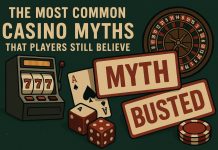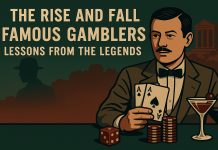Hollywood Westerns depict dusty saloons full of cowboys and cutthroats with aces up their sleeves and one hand on their pistols. But gambling in the Old West involved so much more. Gambling was the most popular form of entertainment all through the frontier. And it attracted men and women of every race, class, and profession.
Once Upon a Time in the West
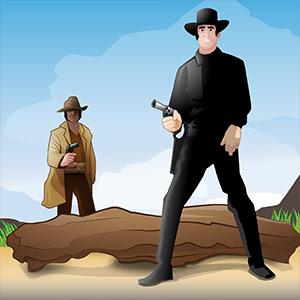
As pioneers spread out into the American West in the mid-1800s, they set up campsites and settlements along the way. And one of the first tents or buildings erected was always a gambling house. The pioneer spirit was predominantly about taking risks and finding fortune, so the settlers and nomads of the west were natural born gamblers.
The first settlers and inhabitants of these early camp towns were predominantly men. So the first buildings were temples to the 3W vices: Wagers, Whisky, and Whores. The rough riders of the era did not require marble palaces in which to work the 3Ws; a large tent with muddy floors, a table, and a bench would suffice. Of course, the whoring occurred in private tents with cots (or in the back of a covered wagon), and were slightly cleaner.
Soon, these crude camps for miners and cowboys slowly evolved into proper towns. Wooden buildings replaced the burlap tents, and the most popular place in town was always the gambling hall. As the town prospered, more elaborate gambling houses sprung up. The status of every western town was measured by the number of gambling houses available—and how ornately decorated they were.
Often simple wooden structures boasted oversized, ostentatious facades to make them appear larger and fancier. This quickly became the archetype for the typical Old West town. Bigger towns spared no expense. Brick-and-mortar gambling houses filled with ornate bars, pianos, chandeliers, and guest rooms for painted ladies and their consorts became a regular feature of the boomtown.
Pouring money into a gambling house to make it stand out sparked a trend that continues today in modern casinos in Atlantic City, Las Vegas, and beyond.
A Fistful of Dollars
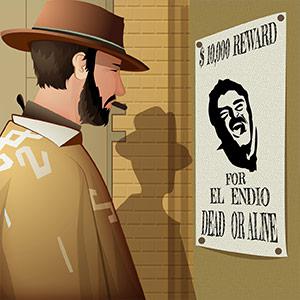
Contrary to popular belief, poker was not the dominant game in Old West saloons. Faro was thee most popular game for real money wagering. Faro appeared in every gambling house in the Old West from 1825 to 1915. The name Faro came from the 17th-century French card game Pharaoh. Faro was wildly popular in western saloons and gambling houses due to its fast pace and easy rules.
Other Old West gambling house favorites included games like high dice, 3 card Monte, chuck-a-luck, 21, and roulette. All of these games had one thing in common: a fast pace and a chance to turn a quick profit. However, many of these games allowed unscrupulous dealers to cheat suckers out of their freshly-mined gold. And this brought on the vice and violence which wrote the legend of the Old West in blood.
Most of the western gambling action expanded out of New Orleans, the American gambling capital of the early 1800s. The gambling riverboats plying the mighty Mississippi were the stuff of legends, and a magnet for crooked dealers and confidence men practicing sleight of hand. In a game like 3 card Monte, the shell game, a smooth dealer could easily palm the pea, and nobody would find it under any of the shells.
Eventually, local authorities, along with angry gamblers who had been robbed, started lynching crooked dealers in the streets. The violence and grifting was so thick around the New Orleans waterways, the whole area was dubbed The Swamp. Very few would dare set foot there.
Go West, Conman
But this did not discourage the card sharps and confidence men. They simply moved west to the honkytonk towns to rook the rubes elsewhere. Many of the more popular western towns were located among silver and gold mines. This proximity to wealth provided a serious revenue stream for those who ran gambling houses.
And as the towns grew in scale and wealth, a new influx of people from all over the world began to appear. The Old West town was no longer a pig trough for wallowing men. Immigrants from Europe, Asia, and Latin America began trickling in to the boomtowns to try their luck in the mines, the cattle ranches, and the gambling saloons. And a growing number of these new arrivals were women.
For a Few Dollars More
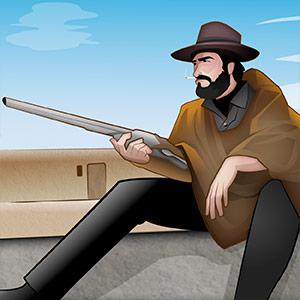
The growing range of clientele in towns like Dodge City, Deadwood, and Tombstone wanted more action. As the towns grew in status, a simple wooden gambling shack would only satisfy the lowliest sodbusters around. As a wave of Southern gentlemen, professional gamblers, and men of leisure began pouring into the boomtowns, the gambling houses offered more sophisticated trappings.
While prostitution was considered a ‘necessary evil’ in these early man caves, the growing population also attracted ‘respectable’ women to the region. Many of the men had wives and families, so a pecking order soon appeared in the henhouse. Among the more financially successful of these prairie ladies were the saloon and dance hall girls. These ladies were far from being prostitutes. These women graced the scenery of the better gambling houses, drank with the men, shared a smile and a dance, and made a lot of money in the process.
While the prostitutes were flat on their backs under dirty cowboys, and the prairie housewives were up to their necks in muddy laundry, the dance hall girls were making a killing—with half of the dirt. And many of the men of the day held them in high regard. They wouldn’t dare mistreat the dance hall girls, as they were professional employees of the establishment. In the longest running TV series in history, Gunsmoke, if anyone dared lay a hand on the lady of the saloon, Miss Kitty, Matt Dillon would tell them to “get the hell out of Dodge.”
The Good, the Bad, and the Ugly
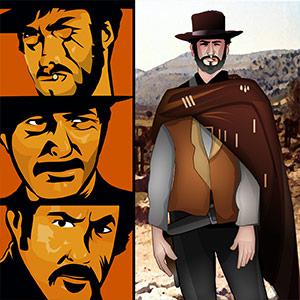
Naturally, any growing town will attract a wide variety of people. They ranged from hard-working miners to professional gamblers, and all types in between. As with any town with a large amount of vice and money flowing through its streets, violence soon follows. In fact, most of the violence depicted in film and television Westerns wasn’t the typical ‘cowboys and Indians’ fighting (though there was plenty of that), but usually involved disputes over mining claims or crooked gamblers. Many a man was shot dead for cheating at a card table. And the locals looked the other way, calling it frontier justice.
Eventually, the violence in towns like Dodge City, Deadwood, and Tombstone grew to untenable levels. So, the town governments started calling in the big guns. These pistols for hire served as protection for gambling houses and saloons. And gunslingers with a notorious reputation earned huge amounts of money for the job.
Guns for Hire
And the more notorious among them even started their own card tables and saloons. Soon, punters flocked in from far and wide just to try their luck with the famous gunslinger/card dealer. Sometimes these hired guns even became sheriffs. The most famous group of hired guns to prosper in the west was none other than the Earp brothers: Wyatt, Virgil, Morgan, and James. Frequent clashes with the outlaw gang known as the Cowboys resulted in the infamous shootout at the O.K. Corral. Surviving Cowboys assassinated Morgan Earp after the shootout, which led Wyatt Earp to form a posse which hunted down and killed most of the remaining gang members.
Another famous gambler and notorious gunslinger was present at most of the shootouts involving Wyatt Earp. This was his long-time friend and fellow gunslinging legend, Doc Holliday. While Holliday died of tuberculosis at age 36, Wyatt Earp came out of all of his violent, gun-slinging encounters in the Wild West without a scratch. He died at age 80 in Los Angeles.
Other notorious western settlements like Deadwood, South Dakota, were equally violent and lawless. Another famous Old West gunfighter and gambler lived briefly in Deadwood before he died. Legendary Old West icon “Wild Bill” Hickok haunted Deadwood saloons to play poker. Legend has it, Bill was sitting with his back to a saloon door playing a game of poker. Poker was was just starting to catch on in the Old West. An old enemy snuck up behind him and shot him in the back of the head. The hand of cards Hickok was holding when he died, eights and aces, was forever known thereafter as ‘the dead man’s hand.’
Decline of Old West Gambling
Many of the frontier gambling towns in the Wild West slowly declined as the mines ran dry. Lawlessness and disorder drove inhabitants further west. Soon, the California Gold Rush established a new string of boomtowns, pioneers, professional gamblers, and hard-working drifters. And all of them were looking to strike it rich, so a new wave of adventurers rolled west.
And with each move and in each new honkytonk town, they brought with them their love for games of chance. Some even found new gambling dens awaiting them just over the horizon.


